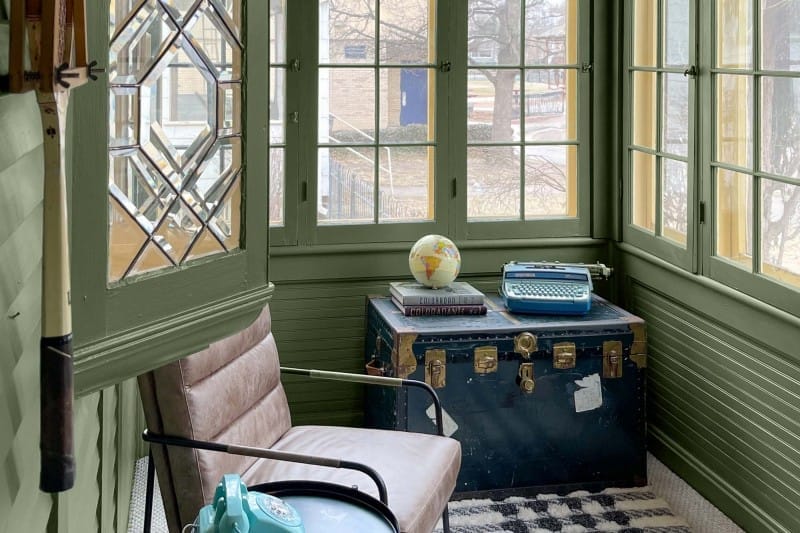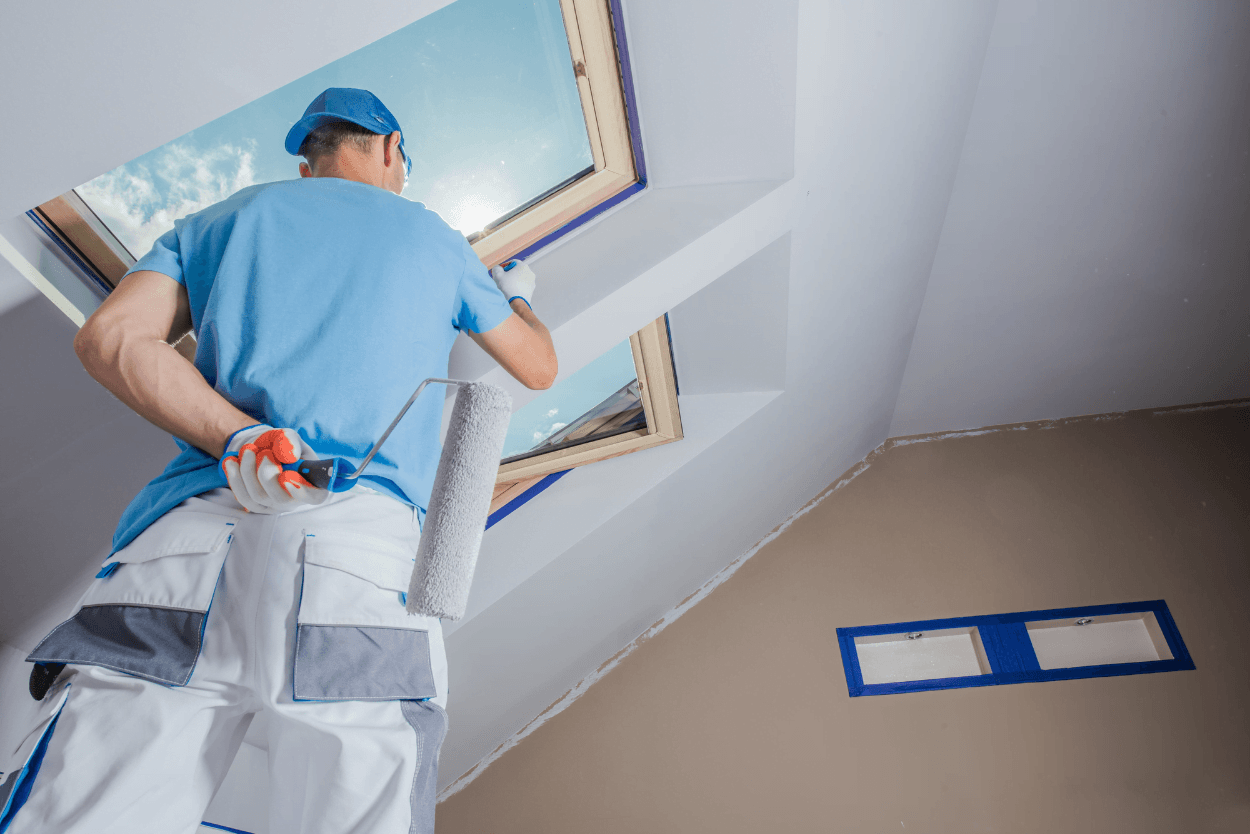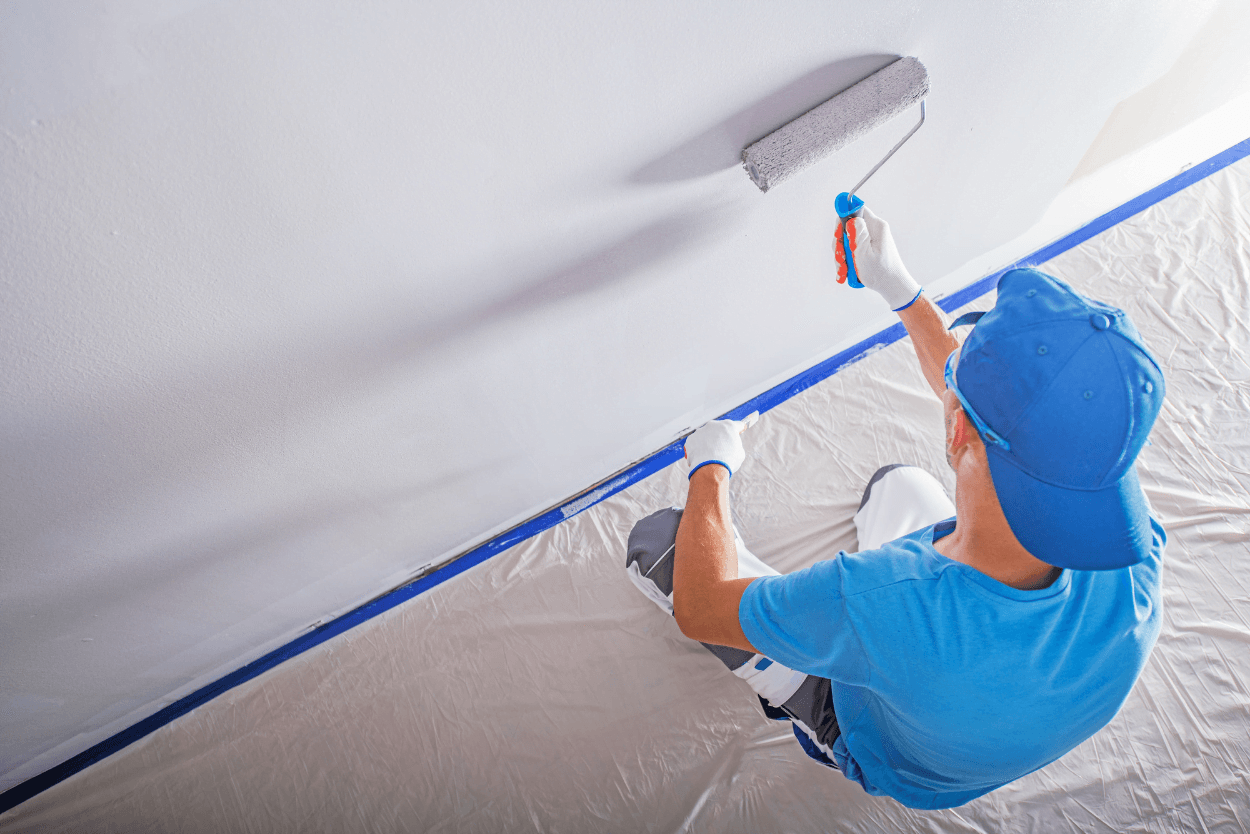Menu

Key Takeaways
20 Exterior Paint Color Combinations to Wow Your Neighborhood!
1. Classic White and Navy Blue
2. Cream and Olive Green
3. Light Beige and Burnt Orange
4. Soft Yellow and Charcoal Gray
5. Sage Green and Taupe
6. Warm Brown and Stone Gray
7. Black and Cobalt Blue
8. Cream and Peach
9. Red + White + Blue + Beige
10. Cream and Pear-Green
11. Lavender and White
12. Brick Red and Gingerbread Orange
13. Black + White + Ruby Red
14. White and Mossy Green
15. Carbon and Pure White
16. Pale Pink + White + Azure
17. Submarine Gray and Dusty Gold
18. Canary Yellow and Soft Gray
19. Sunny Yellow and White
20. Gray and Pale Aqua
Frequently Asked Questions
Ready to Transform Your Home? Book West Hartford’s Trusted Experts Today!
✔ Pairing light, neutral colors like white or cream with darker, bold shades like navy blue or charcoal gray creates a visually striking contrast that enhances curb appeal and adds sophistication to your home’s exterior.
✔ Earthy tones like sage, olive, and mossy green paired with neutrals (e.g., taupe, beige) create a harmonious look, blending the home seamlessly with its natural surroundings.
✔ Using bright accent colors such as ruby red, burnt orange, or sunny yellow for doors, shutters, or trim adds character and energy, turning a simple design into a memorable one.
✔ A combination of different shades of one color, like gray and pale aqua or carbon and pure white, creates a sleek, modern look that feels both sophisticated and understated.
✔ Classic combinations like white and navy or red, white, and blue evoke tradition, while contemporary pairings like submarine gray and dusty gold feel fresh and on-trend.
Choosing the right exterior painting color combination does more than just improve your home’s appearance—it can also add real financial value. According to recent consumer reports, a fresh layer of exterior paint, even if it’s just basic touch-ups, can increase your home’s value by 2-5%. Whether you’re planning to sell or simply want to make your house feel more inviting, selecting the right colors is key.
Here are 20 exterior painting color combinations that will not only enhance your curb appeal but also create a welcoming atmosphere for your home in West Hartford, CT.

Classic white and navy blue is a timeless exterior painting combination that shows elegance and sophistication. White provides a crisp, clean backdrop that allows the rich navy blue accents to pop. This pairing works exceptionally well for colonial or coastal-style homes, adding both modern and traditional elements. Not only does white create a fresh and open feel, but it also reduces heat gain by about 35% compared to black walls, which lowers energy use and peak electrical loads during hot afternoons.
Tip: Use navy blue for the front door, shutters, or trim, and keep the main body of the house white. This combination can work beautifully with brick or stone accents, to enhance overall curb appeal.
Cream and olive green create a warm, natural exterior painting palette that feels inviting and harmonious. The soft, neutral cream tone is a calming backdrop, while the earthy olive green makes a subtle connection to nature. This combination is ideal for homes in rural or wooded settings, as it complements the natural surroundings.
Tip: Use olive green for trim, doors, or window shutters, while cream works well as the primary exterior painting color. This color scheme looks great with wooden or stone elements.
Light beige and burnt orange create a lively yet warm exterior painting combination. Beige offers a neutral, understated backdrop, while burnt orange adds vibrancy and character. This pairing is perfect for homes in sunny or desert climates, where the warm tones enhance the natural landscape and create an inviting atmosphere.
Tip: Use light beige as the primary exterior painting color for walls, while burnt orange can be used on doors, shutters, or rooflines. This bold accent color works well in Mediterranean or southwestern home designs.
Soft yellow and charcoal gray form a striking yet balanced exterior painting combination that feels both cheerful and modern. The soft yellow evokes warmth and happiness, while charcoal gray adds sophistication and depth. This combination is ideal for suburban homes or properties looking to stand out without being too bold.
Tip: Use soft yellow for the main body of the house, with charcoal gray for the trim, doors, or window frames. This palette works well with white accents to sharpen the overall look.
Sage green and taupe offer a serene, earthy exterior painting combination that blends beautifully with natural surroundings. Sage green is calming and refreshing, while taupe provides a neutral base that adds balance. This combination is ideal for homes in rural areas, gardens, or forested properties.
Tip: Apply sage green to the body of the house, and use taupe for trim, doors, and shutters. This exterior painting palette works exceptionally well with stone or wooden accents to create a harmonious look.
Warm brown and stone gray create a grounded, rustic exterior painting combination that feels natural and inviting. The warm brown tones evoke feelings of comfort and homeliness, while stone gray adds a modern, neutral balance. This color scheme is perfect for homes with a rustic or mountain-style design.
Tip: Use warm brown for the main structure, while stone gray can be applied to the trim, roofline, or garage door. This exterior painting palette works especially well when paired with natural stone or wood finishes.
Black and cobalt blue form a bold, contemporary exterior painting combination that makes a dramatic statement. The black offers a sleek, modern edge, while the vibrant cobalt blue adds a touch of liveliness. This combination is ideal for modern homes or those seeking an artistic look.
Tip: Use black as the primary exterior painting color, with cobalt blue as an accent for the front door, shutters, or trim. This combination is particularly striking in minimalist or industrial-style homes.
Cream and peach create a soft, inviting exterior painting combination that feels warm and welcoming. The neutral cream tone allows the subtle peach to add a touch of color without being overpowering. This combination is ideal for homes in coastal or suburban settings.
Tip: Use cream for the body of the house, and apply peach to accents such as shutters, doors, or trim. This exterior painting palette pairs beautifully with light-colored wood or white architectural elements.
A combination of red, white, blue, and beige offers a balanced exterior painting palette. The bright red and blue provide striking contrast, while beige and white soften the overall look. This combination works particularly well for traditional or colonial-style homes.
Tip: Use beige for the main body, with red and blue accents on doors, shutters, or trim. White can be used to highlight architectural details, creating a cohesive, timeless exterior painting look.
Cream and pear-green create a fresh and cheerful exterior painting combination that feels lively yet elegant. The soft cream offers a neutral foundation, while pear-green adds a playful, nature-inspired accent. This color pairing is ideal for homes with gardens or those looking for a bright and airy vibe.
Tip: Use cream as the primary exterior painting color, with pear-green applied to the front door, shutters, or trim. This palette works beautifully with natural wood or white trim accents for a polished finish.

Lavender and white create a delicate, serene exterior painting combination that feels both calming and elegant. The soft lavender tone brings a touch of color, while crisp white accents add a clean, sharp contrast. This pairing is perfect for homes in coastal or garden settings.
Tip: Use lavender for the main body of the house, while white is best suited for trim, doors, and windows. This exterior painting palette works beautifully with natural greenery or floral landscaping.
Brick red and gingerbread orange form a bold, warm exterior painting combination that feels energetic and inviting. The deep brick red provides a solid, earthy base, while gingerbread orange adds vibrancy and character. This is ideal for homes in rustic or southwestern settings in West Hartford, CT.
Tip: Apply brick red to the main exterior painting surface, with gingerbread orange used for doors, shutters, or trim. This color palette works well with stone or wooden accents, to its natural warmth.
Black, white, and ruby red create a striking and bold exterior painting combination that commands attention. The high contrast between black and white adds timeless elegance, while ruby red introduces a pop of vibrant color that adds personality and charm. This trio works exceptionally well for modern and minimalist homes, providing a sleek, sophisticated look with a hint of playfulness.
Tip: Use white as the primary exterior painting color for the walls to create a clean, neutral canvas. Black can be applied to accents such as shutters, trim, or even the roof, to add a sharp contrast. Ruby red is perfect for the front door or small details like window boxes or railings, to draw the eye and give the home an inviting focal point.
White and mossy green make for a refreshing, nature-inspired exterior painting combination. The crispness of white enhances the overall brightness of the home, while mossy green brings an organic, earthy touch. This combination is perfect for homes in rural, wooded, or garden-heavy areas.
Tip: Use white for the main body of the house to create a clean, open feel. Mossy green is ideal for doors, shutters, trim, or even porch railings. This earthy green complements natural stone or wooden elements, making the house feel seamlessly integrated with its environment.
Carbon and pure white form a modern, high-contrast exterior painting combination that’s sleek, bold, and minimalistic. The deep, almost-black tone of carbon creates a dramatic foundation, while pure white provides a crisp, clean accent that sharpens the overall appearance. This is ideal for contemporary or industrial-style homes, offering a look that’s both refined and edgy.
Tip: Use carbon for the main body of the house to make a strong statement, while pure white can be applied to trim, windows, and doors for contrast. This exterior painting scheme works particularly well with minimalist architectural elements, such as clean lines and large windows.
Pale pink, white, and azure create a soft, playful exterior painting combination that feels light, airy, and charming. The gentle tone of pale pink brings warmth and whimsy, while white adds crispness to the overall look. Azure, a soft, sky-blue shade, introduces a calming accent that completes this cheerful palette. This combination is ideal for coastal homes or cottages, where a bright, inviting feel is desired.
Tip: Use pale pink for the main body of the house to add a subtle yet distinctive color. White works best on the trim, doors, and window frames to keep the design crisp and polished. Azure can be applied to smaller accents, such as shutters, or even the front door, to add a refreshing pop of color to the exterior painting scheme.
Submarine gray and dusty gold create a sophisticated exterior painting combination that blends modernity with a touch of classic warmth. Submarine gray, a deep, muted gray, provides a sleek, neutral backdrop, while dusty gold introduces a subtle, luxurious accent. This combination is perfect for contemporary homes, especially those that aim for understated elegance without sacrificing personality.
Tip: Use submarine gray as the main body color to anchor the home in a modern, minimalistic style. Dusty gold can be applied to trim, doors, or architectural details to add a refined touch. This exterior painting combination works beautifully with metallic elements or stone accents, which complement the rich, muted tones of the gray and gold.
Canary yellow and soft gray combine to create a lively yet balanced exterior painting combination that exudes calmness. The bright canary yellow adds an element of cheerfulness and vibrancy, while soft gray tones it down for a more refined, modern appearance. This combination is ideal for homes that want to stand out while still maintaining a sense of elegance.
Tip: Apply canary yellow to the body of the house for a bold, energetic statement. Use soft gray for trim, doors, or shutters to balance the brightness and add a touch of sophistication. This exterior painting scheme works particularly well in sunny climates, where the bright yellow will shine and the gray will prevent the overall look from becoming overwhelming.
Sunny yellow and white create a cheerful exterior painting combination that radiates warmth and optimism. The vibrant yellow brings energy and brightness to the home, while white provides a clean, crisp contrast that enhances the overall look. This combination is perfect for homes in sunny or coastal areas, where a bright, refreshing feel is desired.
Tip: Use sunny yellow as the primary color for the exterior walls to create an eye-catching, lively base. White works best for the trim, doors, and window frames, helping to keep the design balanced and sharp. This exterior painting combination is ideal for homes with porches, where white railings and columns can further enhance the contrast.
Gray and pale aqua offer a soothing, modern exterior painting combination that feels calm and refreshing. The neutral gray provides a sleek, contemporary foundation, while the soft pale aqua adds a hint of color that evokes coastal vibes. This pairing is perfect for homes near the water or those seeking a serene, minimalist look.
Tip: Use gray as the main color for the exterior walls, creating a sophisticated, understated background. Pale aqua is ideal for accents like doors, shutters, or window frames, introducing a light, airy touch to the overall design. This exterior painting combination pairs well with white trim to further enhance the fresh, clean aesthetic.
When selecting an exterior paint color, consider the architecture of your home, its surroundings, and the neighborhood style. Pay attention to permanent features like roofing, stone, or brick accents, as these may influence the palette. Climate can also play a role, with lighter colors being ideal for warmer climates and darker tones working well in cooler regions. Lastly, factor in any homeowner association (HOA) guidelines that may restrict your color choices.
It’s essential to test paint samples before deciding on the final color. Paint can appear vastly different in various lighting conditions, and the texture of your home’s exterior may also affect how a color looks. Paint a small section on each side of your home to observe how the color changes throughout the day and in different weather. This ensures that the color will meet your expectations in every condition.
A typical exterior color scheme includes three elements: the main color, trim, and accent. The main color covers the majority of the house, while the trim should contrast or complement it without being overpowering. Accent colors, often used on doors or shutters, can add personality and curb appeal. Avoid using more than three colors, as this may make the design look overly busy or chaotic.
Your trim color should either complement or contrast the main color of your house. For a more traditional look, choose a lighter trim with a darker body color or vice versa. Crisp white trim is a classic option that works with almost any palette, but you can also opt for a softer neutral or a darker hue for a bolder statement. The key is to make sure the trim highlights architectural features without overpowering them.
The frequency of repainting depends on the quality of paint, climate, and the materials used on your home’s exterior. In general, homes should be repainted every 5-10 years, with wood siding often requiring more frequent touch-ups than brick or stucco. Using high-quality, weather-resistant paint can extend the time between repaints. Regular maintenance, such as power washing and inspecting for peeling or damage, can also help prolong the paint job’s lifespan.
Choosing the right exterior painting colors can be overwhelming, but with the expert team at West Hartford House Painting Experts, you can achieve the perfect look that enhances your home’s curb appeal. Whether you want a bold new color or a timeless, classic combination, we’re here to provide top-quality service tailored to your preferences. Serving West Hartford, CT, we ensure that every home we paint reflects its owner’s unique style while seamlessly fitting into the local community.
Contact West Hartford House Painting Experts today for a consultation and see how we can help you achieve the perfect exterior for your home!

Welcome to West Hartford House Painting Experts. We believe that we are the highest quality painting company in this community and we provide excellent customer service!